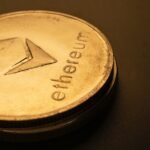Have you ever wondered if that “unique” trading card you own is actually unique? How about that “one-of-a-kind” Renaissance painting sitting in your gallery? It turns out that deciphering the authenticity of unique or rare items is a really difficult thing to do in the real world. The art world is full of fakes and imitations, and this brings huge financial damage to the world of art trade and collectibles.
There is a type of standard token on the Ethereum blockchain that aims to solve this problem. The standard is called ERC721 and its purpose is to apply uniqueness within tokens. ERC721 tokens are sometimes referred to as non-fungible tokens, which is just a fancy way of saying that they can’t be broken down into many parts. The applications of having a truly unique token are actually quite extensive, and the cryptocurrency industry has only scratched the surface of what’s possible.
Table of Contents:
The ERC721 Use Case
The ERC721 use case comes from solving a real-world problem. Much of the criticism of blockchain technology is that there is a lack of use cases outside of cryptocurrency. This is in bad faith, as tracking and tagging unique items using blockchain has proven to be a real use case. Just as there will never be more than 21 million bitcoins in existence, the uniqueness of ERC721 tokens is applied in exactly the same way. So, what exactly can be tracked and tracked with ERC721 tokens?
Crypto Kitties
The first mainstream application based on ERC721 tokens that took off on the Ethereum blockchain was Crypto Kitties. It was a somewhat mundane use case, but it actually managed to prove that the underlying model of unique digital objects has value. Crypto Kitties is a platform where you can buy unique digital cats. Each cat is essentially completely unique and different from every other. Their uniqueness is preserved and applied by the ERC721 standard. Essentially what Crypto Kitties has shown the world is that the same pattern can be applied to baseball cards, artwork, or even digital objects within games. Although the applicability of Crypto Kitties is rather trivial, it was a proof of concept needed to demonstrate the use case of ERC721 tokens.
Tracing art around the world
The real conversation begins when you try to apply the ERC721 standard to real-world artworks. Some experts estimate that as much as 80% of the art on the market is fraudulent. Considering that art is a multibillion-dollar business per year, it is really important that the art exchanged is of an authentic nature. Tracking fully digital cats is one thing, but tracking real-world objects on the blockchain is another. Whenever a real-world object or data is brought into a smart contract, there is an inherent problem of verifying the source of the data. This is known as the “Oracle problem” and is essentially a multi-billion dollar problem in the cryptocurrency industry.
What happens if a fake artwork is authenticated on a blockchain like the original? Just because a blockchain says something is one-way, doesn’t make it one. So not only do we need a perfect tracking system like the one brought by the blockchain, but we also need a perfect oracle that doesn’t make mistakes. Art that is Oraclized by any Joe or Jane should not be trusted. Instead, we still have to rely on art dealers who can be trusted.
Gaming and collectibles
The area of industry ready to benefit most and soonest from ERC721 tokens is the gaming industry. What if every item, skin, or weapon you got in your video game was hosted on a blockchain? What would this do to the game mechanics? It turns out that ERC721 tokens open up a whole new world of possibilities when it comes to designing games.
Imagine playing a game set in medieval times with swords. Once you complete a mission and kill a dragon, you get this new sword, and it’s an ERC721 token hosted on Ethereum. That sword is not contained within the game, but instead, carried within the game with logic. In this sense, the sword is not limited to the game you are playing now, but also to future games yet to be created. Now imagine using that sword in this game and, over time, that sword becomes imbued with more and more power. It becomes interesting when you start playing a completely different game and use the same item from my previous adventure. This time, the game you’re playing is set in a dystopian future world with swords.
Now you can use the same sword from the previous game in a completely different game, with completely different mechanics. This mechanic has yet to be explored in the gaming industry in any meaningful way, but we are all excited to be reviewed by a major gaming studio in the future. With this use case, there is no Oracle problem as there is no interaction between the real and digital worlds. So, as far as we know, this use case is ready to be implemented by game designers around the world.


